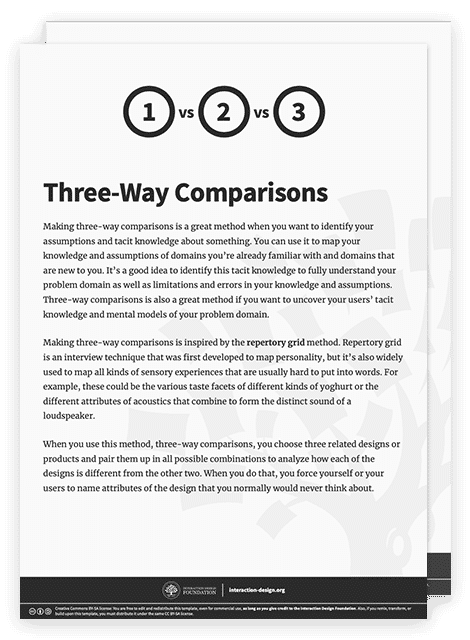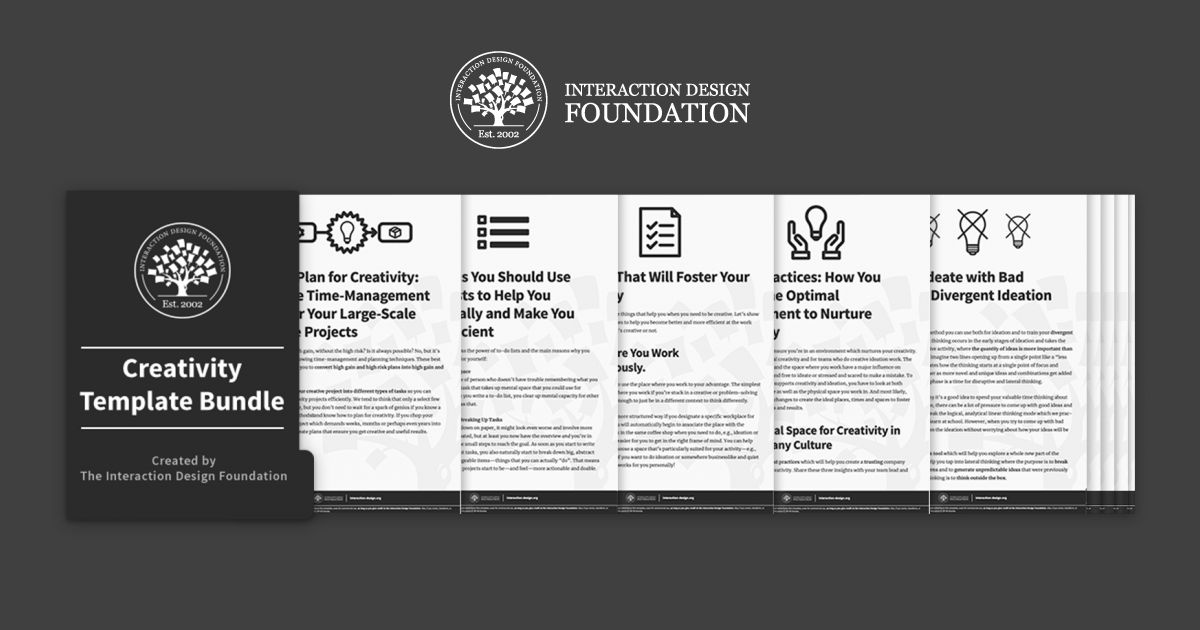Get Your Free Template for “Three-Way Comparisons”

Making three-way comparisons is a great method when you want to identify your assumptions and tacit knowledge about something. You can use it to map your knowledge and assumptions of domains you’re already familiar with and domains that are new to you. It’s a good idea to identify this tacit knowledge to fully understand your problem domain as well as limitations and errors in your knowledge and assumptions. Three-way comparisons is also a great method if you want to uncover your users’ tacit knowledge and mental models of your problem domain. Through this method, you choose three related designs and pair them up in all possible combinations to analyze how each of the designs is different from the other two. When you do that, you force yourself or your users to name attributes of the design that you normally would never think about.
Get the Entire Bundle of 15 “Creativity” Templates

Get your job done faster and better. Get your bundle of 15 high-quality templates!
Members of the Interaction Design Foundation enjoy a discounted price:
Sign up for a membership or log in to save on all template bundles!